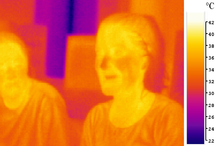GoodBoy
2[H]4U
- Joined
- Nov 29, 2004
- Messages
- 2,745
http://blogs.discovermagazine.com/d-brief/2019/02/28/mice-infrared-vision-nanoparticles
The concept is fairly simple. The scientists used nanoparticles engineered to combine two photons of infrared light into a single photon that mammalian eyes could pick up. The result is that incoming infrared photons with wavelengths (read, energies) of 980 nanometers get translated into photons with wavelengths of 535 nanometers, which sits right around the green part of the visible spectrum.
![[H]ard|Forum](/styles/hardforum/xenforo/logo_dark.png)
